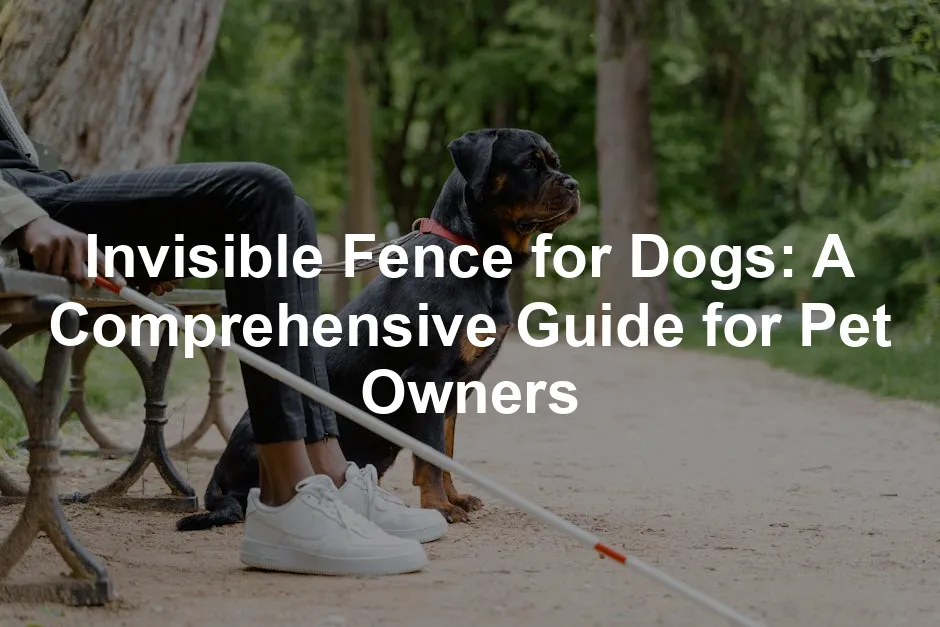Introduction
Have you ever wondered how to keep your dog safe while allowing them the freedom to roam? Invisible fences for dogs offer a modern solution. These systems are becoming increasingly popular among pet owners. They provide a way to contain pets without obstructing your yard’s view or aesthetics. This article will explore the benefits, risks, alternatives, and proper usage of invisible fences. If you’re looking for a reliable option, consider the PetSafe Wireless Pet Containment System. It’s perfect for keeping your furry friend safe while allowing them to enjoy their outdoor adventures.
Summary and Overview
So, what is an invisible fence? It’s a pet containment system that uses a transmitter and a receiver collar. A wire is installed underground, defining the boundary for your pet. When your dog approaches the boundary, the collar emits a warning sound. If they continue, it delivers a mild shock to deter them from crossing. There are several types of invisible fences. Wired systems are commonly used, but wireless and GPS-based options are also available. Each type has unique benefits and drawbacks. For instance, wired systems can cover larger areas, while wireless options are portable and easier to install. Invisible fences can be cost-effective and adaptable, blending into your landscape. However, they also come with risks, such as potential injuries or behavioral issues. Throughout this article, we will examine each aspect to help you make informed decisions. For those seeking a solid wired option, the SportDOG Brand In-Ground Fence System offers reliable performance for your pet’s containment needs.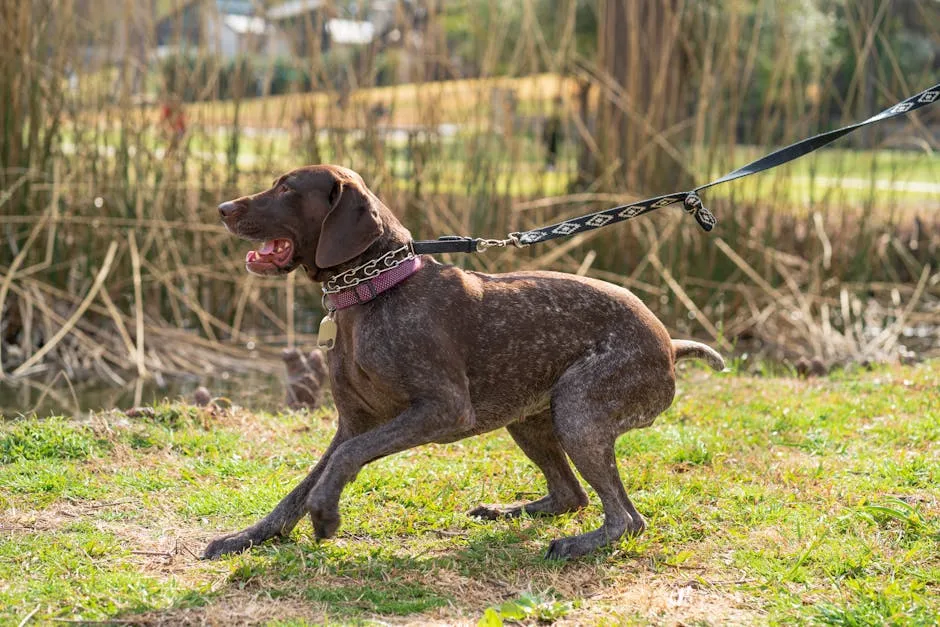
Understanding Invisible Fences
What is an Invisible Fence?
Invisible fences utilize technology to keep your dog safe within specified boundaries. This system consists of a buried wire that emits a signal. The dog wears a receiver collar equipped with prongs. As your dog approaches the boundary, the collar produces a warning tone. If they get too close, a mild shock is administered. The collar’s mechanics are designed to train your dog to recognize their limits. Many systems come with safety features, such as adjustable settings for the shock intensity. This helps ensure your pet’s comfort and safety. Invisible fences can be an effective containment system for many dogs. However, proper training is crucial to ensure they understand their boundaries. Consider the benefits of an invisible fence for your dog, as it may provide them with newfound freedom while keeping them secure. If you’re keen on GPS tracking, the Garmin Alpha 100 GPS Dog Tracker and Training Collar is an excellent choice. It combines tracking and training in one device!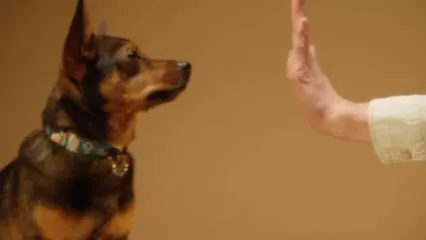
Types of Invisible Fences
When it comes to invisible fences, three main types stand out: wired, wireless, and GPS-based systems. Each type has its own unique features and drawbacks, making it essential to choose one that suits your pet and property. Wired Systems are the traditional choice. They involve burying a wire around the perimeter of your property. This type offers extensive coverage, making it suitable for larger yards. Installation can be labor-intensive, but it provides a reliable boundary. Battery life for collars is typically long-lasting, ensuring your dog has constant protection. On the other hand, Wireless Systems are easier to install. They use a central transmitter that creates a circular boundary. These systems are portable, making them ideal for renters or those who move frequently. However, their coverage area is limited, which might not work for larger properties. The collar batteries also require regular replacement, which can be inconvenient. Lastly, GPS-based Systems have gained popularity for their flexibility. They allow you to set custom boundaries via smartphone apps. This feature is perfect for travel, as you can create virtual fences anywhere. However, these systems can be more costly and may have shorter battery life compared to wired options. Each type offers varying installation processes and coverage areas. Before making a decision, evaluate which type might be best for your situation. Consider your dog’s behavior, your yard size, and how often you travel. Choosing the right invisible fence can significantly enhance your pet’s outdoor experience while keeping them safe. Another great option for portable containment is the PetSafe Stay & Play Wireless Fence. It’s perfect for those who need a flexible solution!
The Pros and Cons of Using Invisible Fences
Benefits of Invisible Fences
Invisible fences come with several advantages that make them appealing to dog owners. First, they are often more cost-effective than traditional fencing options. Installing a physical fence can be expensive, while an invisible fence typically requires a lower initial investment. Another advantage is their adaptability. These fences can be installed in various terrains, including hilly or wooded areas. This versatility allows you to create a safe space for your dog without obstructing scenic views. Plus, since they don’t require physical barriers, your yard retains its aesthetic appeal. Lastly, invisible fences provide freedom for pets. With proper training, dogs can enjoy significant outdoor space without wandering off. This freedom promotes exercise and mental stimulation, enhancing your dog’s overall well-being. Reflect on how these benefits can improve your dog’s outdoor experience as you consider your options. Don’t forget the importance of training tools! The Dog Training Clicker can be a game-changer in reinforcing good behavior!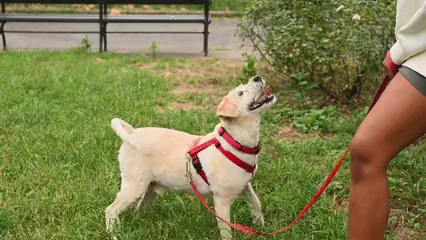
Potential Risks and Drawbacks
Using an invisible fence can pose several risks to your dog. One major concern is the physical injury caused by shock collars. These devices deliver a mild shock to deter pets from crossing boundaries. While intended to be safe, some collars can malfunction, leading to prolonged exposure or excessive shocks. This can result in burns or skin irritation, affecting your dog’s comfort and well-being. Moreover, invisible fences can create behavioral issues. The fear associated with the shock can lead to anxiety or aggression. Dogs may develop a fear of their yard, avoiding it altogether. This fear-based behavior can also extend beyond the fence, making walks or outdoor activities stressful for your pet. Reliability is another significant concern with invisible fences. Dogs can escape, especially if motivated by a strong instinct, like chasing a squirrel or another animal. Additionally, collar batteries may die, leaving your dog unprotected. This unpredictability can lead to dangerous situations for both your pet and others. Invisible fences do not provide a physical barrier against outside threats, such as aggressive animals or even strangers. Without a secure fence, your dog might face potential dangers from the outside. Considering these drawbacks, it’s crucial to evaluate how an invisible fence might impact your dog’s safety and behavior. Always prioritize your pet’s well-being when deciding on containment options.
Training Your Dog to Use an Invisible Fence
Effective Training Techniques
Training your dog to respect invisible fence boundaries is essential. Start with a gradual introduction to the system. Allow your dog to explore the yard while wearing the collar, ensuring they understand the warning sounds. Use flags to visually mark the boundary, helping your dog recognize their limits. Positive reinforcement is key to successful training. Reward your dog with treats and praise when they stay within the boundaries. This encourages them to associate the yard’s limits with positive experiences. Monitoring your dog’s behavior during the training process is vital. Pay attention to their reactions to the collar and adjust training methods if needed. Use short, frequent sessions to avoid overwhelming your dog. For training treats, the Purely Paws Pet Training Treats are a fantastic option to motivate your dog during training sessions!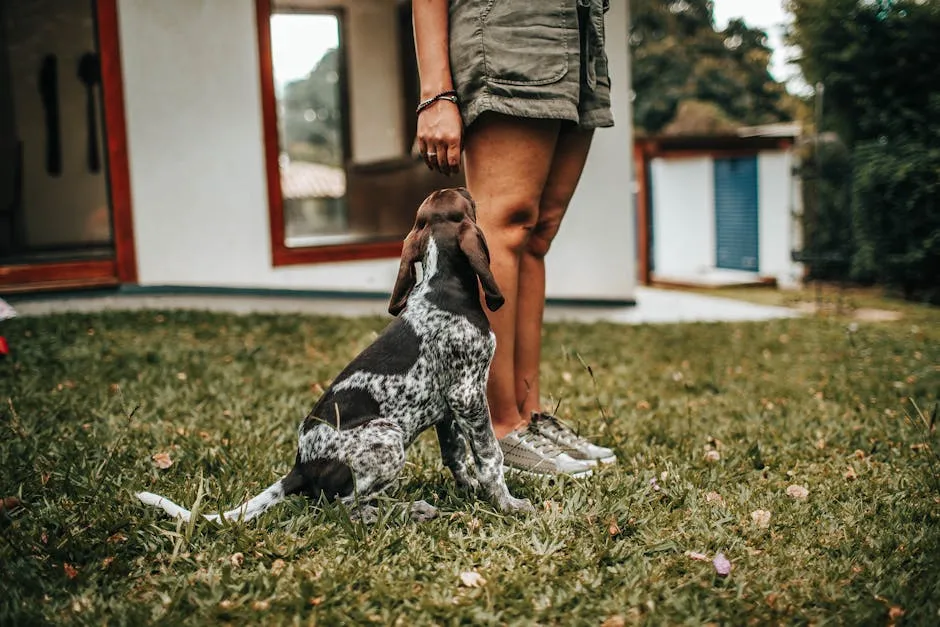
Common Training Mistakes to Avoid
Training your dog to use an invisible fence can be tricky. Many owners make common mistakes that hinder success. One frequent error is inconsistent training. Dogs thrive on routine. Skipping sessions or not following through can confuse them. Ensure you stick to a regular training schedule. Neglecting supervision is another mistake owners often make. Leaving your dog unsupervised can lead to accidents or misunderstandings. Always monitor your dog’s behavior during the initial training phases. This helps reinforce boundaries and ensures they feel secure. Additionally, misunderstanding dog behavior can create challenges. Every dog learns differently. Some might respond well to training, while others may need extra patience and encouragement. Pay attention to their reactions. Adjust your methods if they seem anxious or fearful. By avoiding these training pitfalls, you can foster a positive learning experience. Ensure you follow proper training protocols for better results.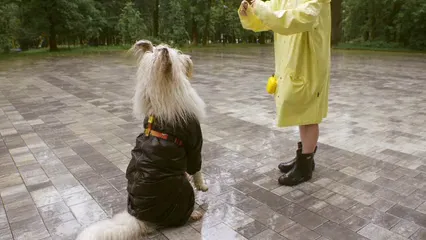
Alternatives to Invisible Fences
Physical Fencing Solutions
If an invisible fence isn’t the right fit for you, consider traditional fencing options. Physical fences come in various types, including wood, vinyl, and chain link. Each has its benefits, such as durability and aesthetic appeal. Wood fences offer a natural look and can be customized to match your home. Vinyl fences are low-maintenance and resistant to weather damage. Chain link fences are often the most affordable, providing secure containment without obstructing views. Cost comparisons are essential when deciding which type of fence to install. While traditional fencing can have a higher initial investment, they often prove more reliable in the long run. They provide a physical barrier against outside threats and ensure your dog stays safe. If you’re concerned about aesthetics, many decorative options are available. Explore physical fencing options if invisible solutions aren’t suitable. Your dog’s safety and comfort should always come first.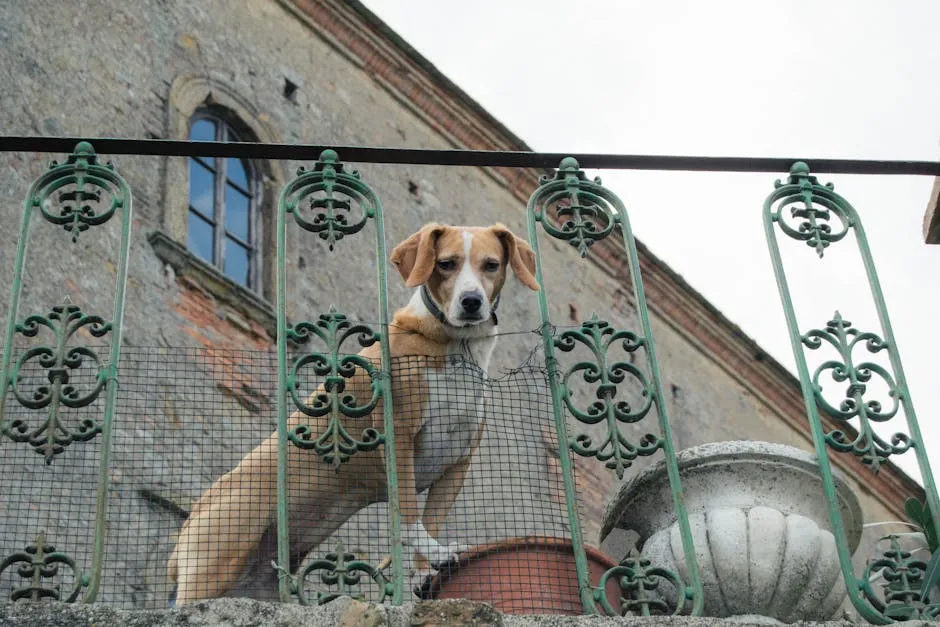
Other Containment Solutions
When considering containment solutions for your dog, there are several options beyond invisible fences. Long lines, cable runs, and dog parks offer unique benefits for pet owners. Long lines are leashes that range from 10 to 50 feet. They allow your dog to roam while you maintain control. This setup is perfect for supervised outdoor play. It provides your dog with freedom without risking escape. Just remember to keep an eye on them! For those on the go, a Dog Travel Carrier: Petmate Two Door Top Load Kennel is an essential item for transporting your dog safely! Cable runs also offer a flexible option. They consist of a cable strung between two points, allowing your dog to explore a designated area. However, they may pose risks like tangling or territorial aggression. Always supervise your dog when using a cable run. Dog parks can be a fantastic resource for socialization. They allow dogs to interact with others in a safe environment. These parks encourage exercise and play, promoting a happy, healthy lifestyle for your pet. Consider these community resources for exercise and socialization. They can enhance your dog’s quality of life while ensuring their safety. You can learn more about the benefits of dog parks in our ultimate guide to dog parks.Dog parks provide an excellent opportunity for socialization and exercise for your furry friends. Explore more about dog parks.
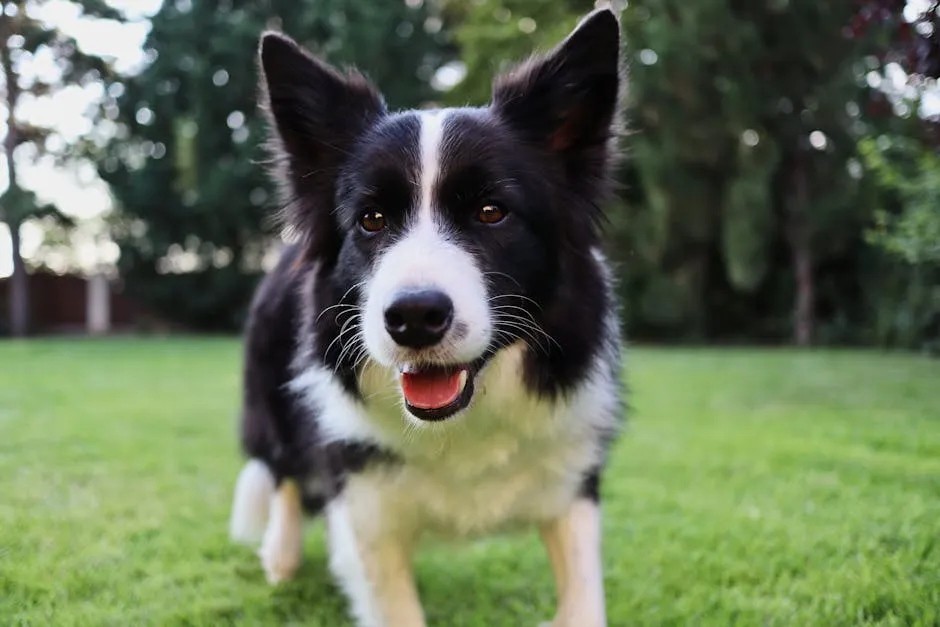
Conclusion
Invisible fences provide a modern solution for pet containment. They offer benefits like cost-effectiveness and adaptability. However, risks such as physical injuries and behavioral issues are important to consider. Proper training and monitoring are crucial for success. Additionally, exploring alternative options can help you make the best decision for your pet. Every dog is unique, and their containment needs may vary. Take time to evaluate the most suitable solution for your furry friend’s safety and well-being. If you want to keep your dog entertained while you’re busy, consider the Outward Hound Hide-A-Squirrel Puzzle Dog Toy. It’s great for keeping their minds sharp!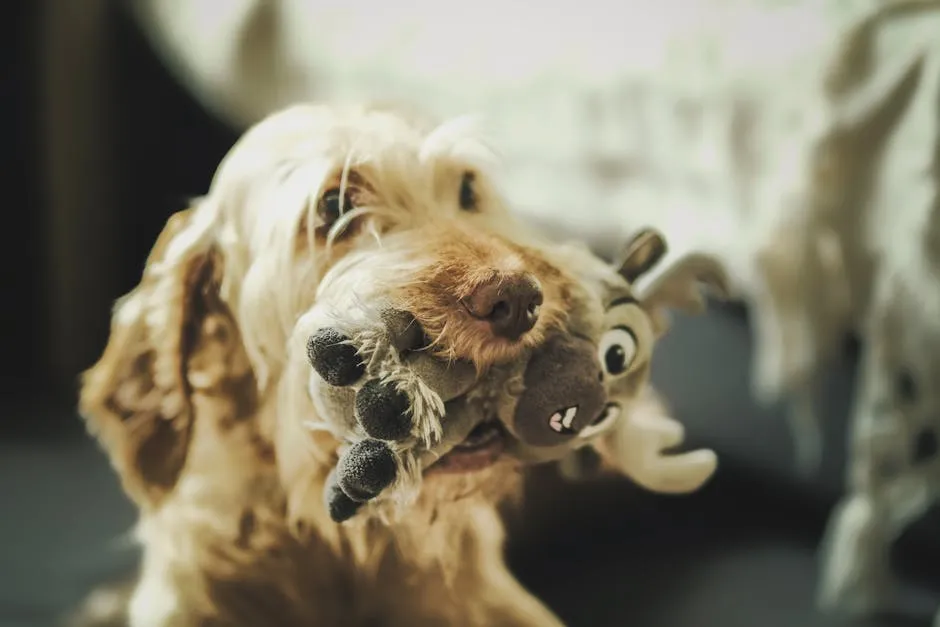
All images from Pexels

